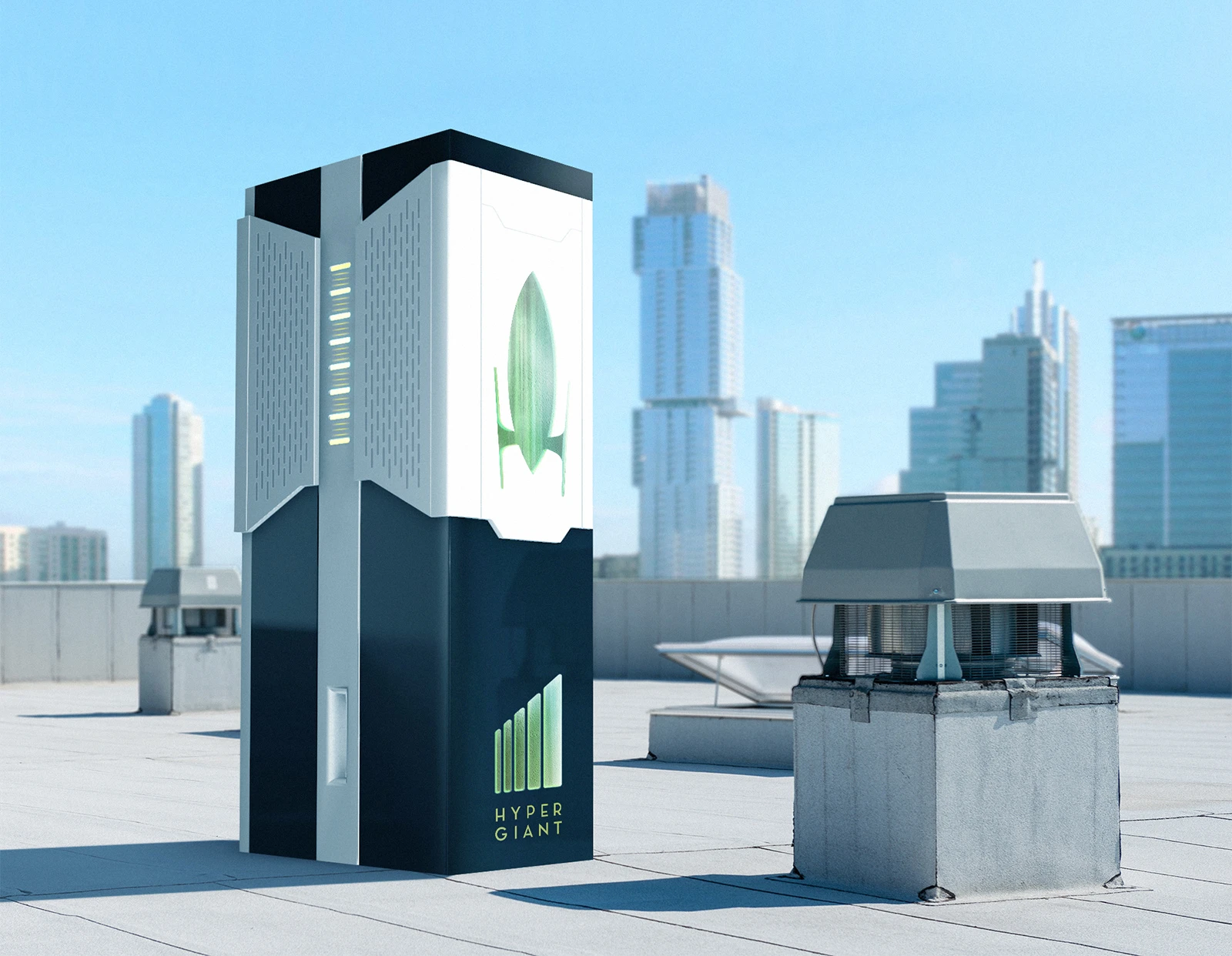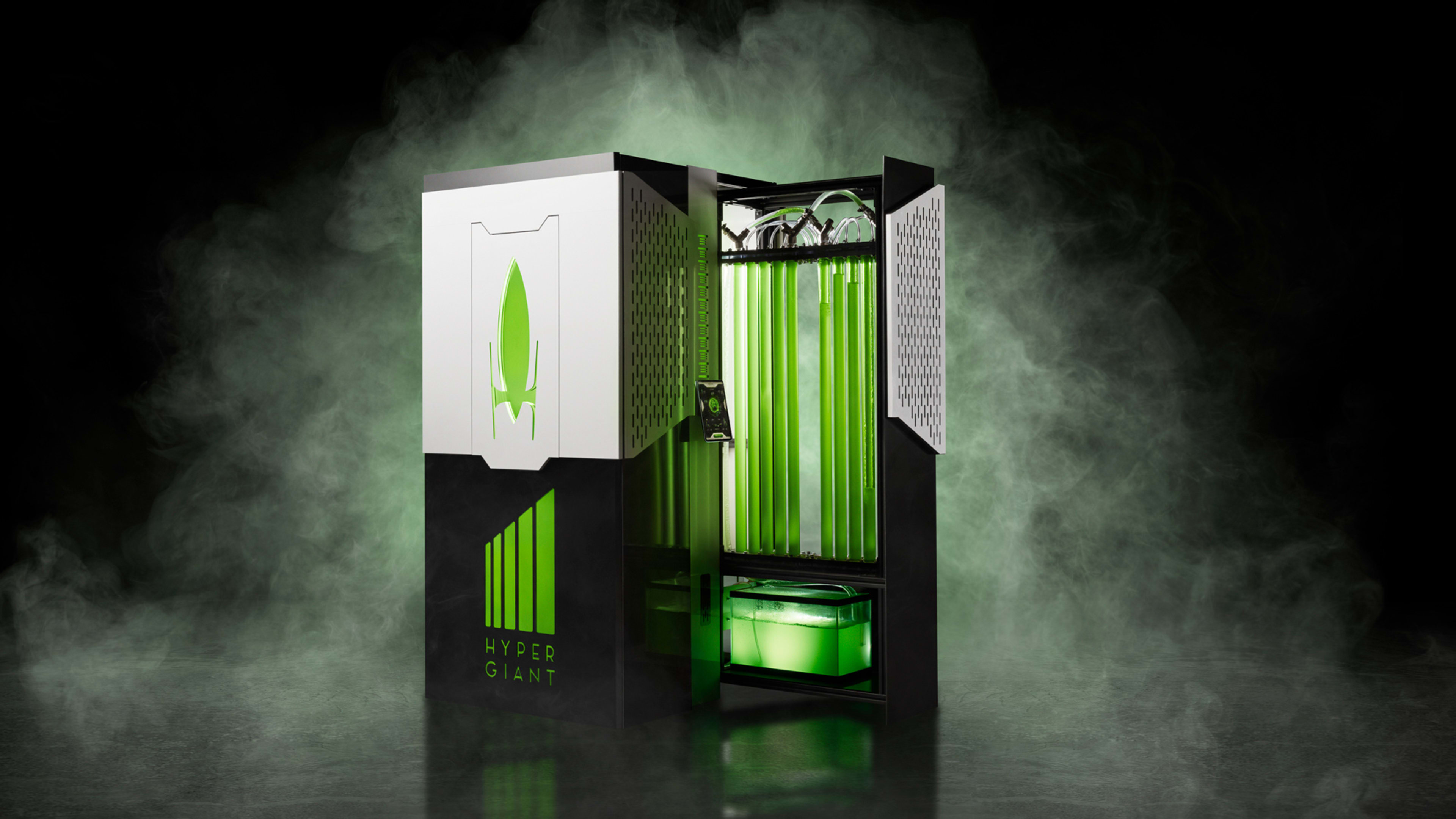In the future, your office might have an extra appliance next to the copy machine and the refrigerator: an algae bioreactor. Designed to fit inside offices and eventually sit on the rooftops throughout cities, it can capture as much carbon from the atmosphere as an acre of trees. And there’s an initial prototype already at work.
Inside the bioreactor, algae does the work. “What’s amazing about algae is it’s really cheap and it’s easy to grow—the core things it needs are sunlight, CO2, and water,” says Ben Lamm, CEO and founder of Hypergiant Industries, an AI-focused tech company that developed a prototype of the device, called the Eos Bioreactor. Because algae grows much more quickly than trees, it can also sequester carbon more quickly; the company estimates that the device, which optimizes the algae’s ability to capture CO2, can sequester around two tons of carbon out of the air each year.
The company isn’t the first to envision using algae to clean city air. One German building already uses an algae-covered façade to power itself. But Hypergiant, which typically creates AI-driven technology for companies in the aviation, space exploration, and defense industries, saw an opportunity to use machine learning to make more efficient algae-filled devices that could be broadly deployed.

The team took the project on internally after exploring ways that they could use the company’s skills to tackle climate change. “As an emerging tech company that’s working in the field of AI and robotics and all of these super interesting things, we have not just an opportunity, but we have a responsibility to make some of our R&D lab time focused on the some of the biggest challenges,” Lamm says.
The first version of the device, which is currently in operation, is three-by-three-by-seven feet. It’s a closed system that works indoors, connecting with an HVAC system to reduce CO2 levels inside and release cleaner air. The closed system also makes it possible for the team to study how algae grows—with sensors monitoring everything from light and heat and pH to the speed of growth and oxygen output—and how the system can be tweaked to work best in different conditions outside on rooftops. “With the first generation Eos, we have precise control of every aspect of the algae’s environment and life cycle,” he says. “It’s a photobioreactor, but it’s also an experimentation platform. We’ll be using this platform to better understand the environment that best suits biomass production under controlled circumstances, so that we can better understand how to design reactors for the variety of environmental conditions we’re going to encounter in the wild.”
As the 55-gallon device generates algae, it can be harvested and used to make products like food, fertilizer, cosmetics, or even fuel (though it’s worth noting that many past attempts to make algae biofuel into lasting businesses have failed). The company envisions using the devices in various sizes depending on local needs. Some products—like fuel or fertilizer—could potentially be consumed onsite. For other products, the algae would need to be collected and processed elsewhere.
It would require rethinking larger systems. “There’s nothing new about the idea of growing algae to sequester carbon, and a few dispersed bioreactors alone are not going to reverse climate change,” Lamm says. “In order for this to work, we need to approach this as the beginnings of a new form of hyperlocal, decentralized supply chain, and then dovetail this work with a host of other initiatives that have the potential to dramatically change the way consumables are produced, processed, transported, and consumed, especially in our population centers. We want cities, companies, and individuals to adopt this technology, not just because it’s the right thing to do, but also because it’s cheaper and more practical than the alternatives.”
The team is currently building mobile applications that can monitor and run the bioreactors autonomously. The company aims to use the project to showcase the potential of algae as a solution. Because it has a new division that works on smart tech for cities, it plans to work with cities to adopt the bioreactors along with other smart infrastructure. But it also wanted to make the device simple and low-cost enough that anyone could build one themselves, and it’s working on DIY plans that it will release next year so people can build the bioreactors at home. “We’re trying to give more people options for how they can go make a difference in their own communities,” Lamm says.
Recognize your company's culture of innovation by applying to this year's Best Workplaces for Innovators Awards before the extended deadline, April 12.
